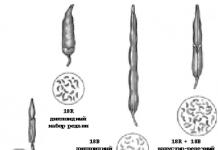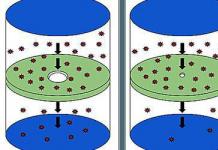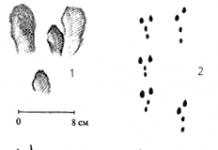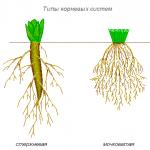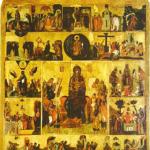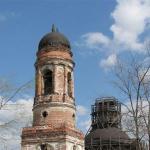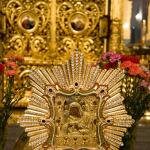When people talk about aces of World War II, they usually mean pilots, but the role of armored vehicles and tank forces in this conflict also cannot be underestimated. There were aces among the tankers as well.
Kurt Knispel
Kurt Kniepsel is considered the most successful tank ace of World War II. He has almost 170 tanks to his name, but not all of his victories have been confirmed so far. During the war years, he destroyed 126 tanks as a gunner (20 unconfirmed), and as a heavy tank commander - 42 enemy tanks (10 unconfirmed).
Knipsel was nominated for the Knight's Cross four times, but never received this award. The tanker's biographers attribute this to his difficult character. The historian Franz Kurowski, in his book about Knipsel, writes about several incidents in which he showed far from the best discipline. In particular, he stood up for a beaten Soviet soldier and got into a fight with a German officer.
Kurt Knipsel died on April 28, 1945, after being wounded in a battle with Soviet troops near the Czech town of Vostice. In this battle, Knipsel destroyed his 168th officially registered tank.
Michael Wittmann

It was convenient to make Michael Wittmann, unlike Kurt Knipsel, a hero of the Reich, even though not everything in his “heroic” biography was pure. Thus, he claimed that during the winter battles in Ukraine in 1943-1944 he destroyed 70 Soviet tanks. For this, on January 14, 1944, he received an extraordinary rank and was awarded the Knight's Cross and oak leaves, but after some time it became clear that in this section of the front the Red Army did not have tanks at all, and Wittmann destroyed two "thirty-fours" captured by the Germans and served in the Wehrmacht. In the darkness, Wittmann’s crew did not see the identification marks on the tank turrets and mistook them for Soviet ones. However, the German command decided not to advertise this story.
Wittmann took part in the battles on the Kursk Bulge, where, according to him, he destroyed 28 Soviet self-propelled guns and about 30 tanks.
According to German sources, as of August 8, 1944, Michael Wittmann had 138 enemy tanks and self-propelled guns and 132 artillery pieces destroyed.
Zinoviy Kolobanov

The feat of tanker Zinovy Kolobanov was included in the Guinness Book of Records. On August 20, 1941, 5 tanks of the company of Senior Lieutenant Kolobanov destroyed 43 German tanks, 22 of them were knocked out within half an hour.
Kolobanov competently built a defensive position.
Kolobanov's camouflaged tanks met the German tank column with volleys. The 3 lead tanks were immediately stopped, then the gun commander Usov transferred fire to the tail of the column. The Germans were deprived of the opportunity to maneuver and were unable to leave the firing range.
Kolobanov's tank came under massive fire. During the battle, it withstood more than 150 direct hits, but the KV-1's strong armor held out.
For their feat, Kolobanov’s crew members were nominated for the title of Heroes of the Soviet Union, but the award again did not find the hero. On September 15, 1941, Zinoviy Kalabanov was seriously wounded (his spine and head were damaged) when a German shell exploded near the KV-1 while refueling the tank and loading ammunition. However, in the summer of 1945, Kolobanov returned to duty and served in the Soviet army for another 13 years.
Dmitry Lavrinenko

Dmitry Lavrinenko was the most successful Soviet tank ace of World War II. In just 2.5 months, from October to December 1941, he destroyed or disabled 52 two German tanks. Lavrinenko's success can be attributed to his determination and combat savvy. Fighting as a minority against superior enemy forces, Lavrinenko managed to get out of almost hopeless situations. In total, he had the opportunity to participate in 28 tank battles, and was burned in a tank three times.
On October 19, 1941, Lavrinenko’s tank defended Serpukhov from the German invasion. His T-34 single-handedly destroyed a motorized enemy column that was advancing along the highway from Maloyaroslavets to Serpukhov. In that battle, Lavrinenko, in addition to war trophies, managed to obtain important documents.
On December 5, 1941, the Soviet tank ace was nominated for the title of Hero of the Soviet Union. Even then, he had 47 destroyed tanks to his name. But the tanker was awarded only the Order of Lenin. However, by the time the award ceremony was supposed to take place, he was no longer alive.
The title of Hero of the Soviet Union was awarded to Dmitry Lavrinenko only in 1990.
Creighton Abrams

It must be said that masters of tank combat were not only in the German and Soviet troops. The allies also had their own “aces”. Among them we can mention Creighton Abrams. His name has been preserved in history; the famous American M1 tank is named after him.
Abrams was the one who organized the tank breakthrough from the Normandy coast to the Moselle River. Creighton Abrams' tank units reached the Rhine and, with infantry support, saved the landing group surrounded by the Germans in the German rear.
Abrams' units have about 300 units of equipment, although most of them are not tanks, but supply trucks, armored personnel carriers and other auxiliary equipment. The number of destroyed tanks among the “trophies” of Abrams’ units is small - approximately 15, of which 6 are personally credited to the commander.
Abrams's main merit was that his units managed to cut off enemy communications on a large section of the front, which significantly complicated the position of the German troops, leaving them without supplies.
Any war is a terrible grief for any people that it affects in one way or another. Throughout its history, humanity has experienced many wars, two of which were world wars. The First World War almost completely destroyed Europe and led to the fall of some major empires, such as the Russian and Austro-Hungarian ones. But even more terrible in its scale was the Second World War, in which many countries from almost all over the world were involved. Millions of people died, and many more were left homeless. This terrible event still affects modern man in one way or another. Its echoes can be found everywhere in our lives. This tragedy left behind a lot of mysteries, disputes over which have not subsided for decades. The heaviest burden was assumed in this life-and-death battle by the Soviet Union, which was not yet fully strengthened from the revolution and civil wars and was only expanding its military and peaceful industry. An irreconcilable rage and desire to fight the invaders who encroached on the territorial integrity and freedom of the proletarian state settled in the hearts of people. Many went to the front voluntarily. At the same time, the evacuated industrial facilities were reorganized to produce products for the needs of the front. The struggle has assumed a truly national scale. That is why it is called the Great Patriotic War.
Who are the aces?
Both the German and Soviet armies were well trained and equipped with equipment, aircraft and other weapons. The personnel numbered in the millions. The collision of such two war machines gave birth to its heroes and its traitors. Some of those who can rightfully be considered heroes are the aces of World War II. Who are they and why are they so famous? An ace can be considered a person who has achieved heights in his field of activity that few others have managed to conquer. And even in such a dangerous and terrible matter as the military, there have always been their professionals. Both the USSR and the Allied forces, and Nazi Germany had people who showed the best results in terms of the number of enemy equipment or manpower destroyed. This article will tell about these heroes.
The list of World War II aces is extensive and includes many individuals famous for their exploits. They were an example for an entire people, they were adored and admired.
Aviation is without a doubt one of the most romantic, but at the same time dangerous branches of the military. Since any equipment can fail at any time, the job of a pilot is considered very honorable. It requires iron endurance, discipline, and the ability to control oneself in any situation. Therefore, aviation aces were treated with great respect. After all, to be able to show good results in such conditions when your life depends not only on technology, but also on yourself is the highest degree of military art. So, who are these ace pilots of World War II, and why are their exploits so famous?
One of the most successful Soviet ace pilots was Ivan Nikitovich Kozhedub. Officially, during his service on the fronts of the Great Patriotic War, he shot down 62 German aircraft, and he is also credited with 2 American fighters, which he destroyed at the end of the war. This record-breaking pilot served in the 176th Guards Fighter Aviation Regiment and flew the La-7 aircraft.

The second most productive during the war was Alexander Ivanovich Pokryshkin (who was awarded the title of Hero of the Soviet Union three times). He fought in Southern Ukraine, in the Black Sea region, and liberated Europe from the Nazis. During his service he shot down 59 enemy aircraft. He did not stop flying even when he was appointed commander of the 9th Guards Aviation Division, and achieved some of his aerial victories while already in this position.
Nikolai Dmitrievich Gulaev is one of the most famous military pilots, who set a record of 4 flights per destroyed aircraft. In total, during his military service he destroyed 57 enemy aircraft. Twice awarded the honorary title of Hero of the Soviet Union.
He also had a high result. He shot down 55 German planes. Kozhedub, who happened to serve for some time with Evstigneev in the same regiment, spoke very respectfully of this pilot.
But, despite the fact that the tank forces were one of the most numerous in the Soviet army, for some reason the USSR did not have ace tankers of the Second World War. Why this is so is unknown. It is logical to assume that many personal scores were deliberately inflated or underestimated, so it is not possible to name the exact number of victories of the above-mentioned masters of tank combat.
German tank aces
But the German tank aces of World War II have a much longer track record. This is largely due to the pedantry of the Germans, who strictly documented everything, and they had much more time to fight than their Soviet “colleagues.” The German army began active operations back in 1939.
German tanker No. 1 is Hauptsturmführer Michael Wittmann. He fought with many tanks (Stug III, Tiger I) and destroyed 138 vehicles throughout the war, as well as 132 self-propelled artillery installations from various enemy countries. For his successes he was repeatedly awarded various orders and badges of the Third Reich. Killed in action in 1944 in France.
You can also highlight such a tank ace as For those who are in one way or another interested in the history of the development of the tank forces of the Third Reich, the book of his memoirs “Tigers in the Mud” will be very useful. During the war years, this man destroyed 150 Soviet and American self-propelled guns and tanks.
Kurt Knispel is another record-breaking tanker. During his military service, he knocked out 168 enemy tanks and self-propelled guns. About 30 cars are unconfirmed, which prevents him from matching Wittmann's results. Knispel died in battle near the village of Vostits in Czechoslovakia in 1945.
In addition, Karl Bromann had good results - 66 tanks and self-propelled guns, Ernst Barkmann - 66 tanks and self-propelled guns, Erich Mausberg - 53 tanks and self-propelled guns.
As can be seen from these results, both Soviet and German tank aces of World War II knew how to fight. Of course, the quantity and quality of Soviet combat vehicles was an order of magnitude higher than that of the Germans, however, as practice has shown, both were used quite successfully and became the basis for some post-war tank models.
But the list of military branches in which their masters distinguished themselves does not end there. Let's talk a little about submarine aces.
Masters of Submarine Warfare
Just as in the case of aircraft and tanks, the most successful are the German sailors. Over the years of its existence, Kriegsmarine submariners sank 2,603 ships of allied countries, the total displacement of which reaches 13.5 million tons. This is a truly impressive figure. And the German submarine aces of World War II could also boast of impressive personal accounts.

The most successful German submariner is Otto Kretschmer, who has 44 ships, including 1 destroyer. The total displacement of the ships sunk by him is 266,629 tons.
In second place is Wolfgang Lüth, who sent 43 enemy ships to the bottom (and according to other sources - 47) with a total displacement of 225,712 tons.
He was also a famous naval ace who even managed to sink the British battleship Royal Oak. This was one of the first officers to receive oak leaves; Prien destroyed 30 ships. Killed in 1941 during an attack on a British convoy. He was so popular that his death was hidden from the people for two months. And on the day of his funeral, mourning was declared throughout the country.
Such successes of German sailors are also quite understandable. The fact is that Germany began a naval war back in 1940, with a blockade of Britain, thus hoping to undermine its naval greatness and, taking advantage of this, to successfully capture the islands. However, very soon the plans of the Nazis were thwarted, as America entered the war with its large and powerful fleet.
The most famous Soviet submarine sailor is Alexander Marinesko. He sank only 4 ships, but what ones! The heavy passenger liner "Wilhelm Gustloff", the transport "General von Steuben", as well as 2 units of the heavy floating battery "Helene" and "Siegfried". For his exploits, Hitler added the sailor to his list of personal enemies. But Marinesko’s fate did not work out well. He fell out of favor with the Soviet regime and died, and people stopped talking about his exploits. The great sailor received the Hero of the Soviet Union award only posthumously in 1990. Unfortunately, many USSR aces of World War II ended their lives in a similar way.
Also famous submariners of the Soviet Union are Ivan Travkin - he sank 13 ships, Nikolai Lunin - also 13 ships, Valentin Starikov - 14 ships. But Marinesko topped the list of the best submariners of the Soviet Union, as he caused the greatest damage to the German navy.
Accuracy and stealth
Well, how can we not remember such famous fighters as snipers? Here the Soviet Union takes the well-deserved palm from Germany. Soviet sniper aces of World War II had a very high track record. In many ways, such results were achieved thanks to massive government training of the civilian population in shooting from various weapons. About 9 million people were awarded the Voroshilov Shooter badge. So, what are the most famous snipers?

The name of Vasily Zaitsev frightened the Germans and inspired courage in Soviet soldiers. This ordinary guy, a hunter, killed 225 Wehrmacht soldiers with his Mosin rifle in just a month of fighting at Stalingrad. Among the outstanding sniper names are Fedor Okhlopkov, who (during the entire war) accounted for about a thousand Nazis; Semyon Nomokonov, who killed 368 enemy soldiers. There were also women among the snipers. An example of this is the famous Lyudmila Pavlichenko, who fought near Odessa and Sevastopol.
German snipers are less known, although several sniper schools have existed in Germany since 1942, which provided professional training. Among the most successful German shooters are Matthias Hetzenauer (345 killed), (257 killed), Bruno Sutkus (209 soldiers shot). Also a famous sniper from the countries of the Hitler bloc is Simo Haiha - this Finn killed 504 Red Army soldiers during the war years (according to unconfirmed reports).
Thus, the sniper training of the Soviet Union was immeasurably higher than that of the German troops, which allowed Soviet soldiers to bear the proud title of aces of the Second World War.
How did you become aces?
So, the concept of “ace of World War II” is quite broad. As already mentioned, these people achieved truly impressive results in their business. This was achieved not only through good army training, but also through outstanding personal qualities. After all, for a pilot, for example, coordination and quick reaction are very important, for a sniper - the ability to wait for the right moment to sometimes fire a single shot.
Accordingly, it is impossible to determine who had the best aces of World War II. Both sides performed unparalleled heroism, which made it possible to single out individual people from the general mass. But it was possible to become a master only by training hard and improving your combat skills, since war does not tolerate weakness. Of course, dry statistics will not be able to convey to modern people all the hardships and adversities that war professionals experienced during their rise to the honorary pedestal.
We, the generation that lives without knowing such terrible things, should not forget about the exploits of our predecessors. They can become an inspiration, a reminder, a memory. And we must try to do everything to ensure that such terrible events as the past wars do not happen again.
...the squadron lost 80 pilots in a fairly short period of time,
of which 60 never shot down a single Russian aircraft
/Mike Speake “Luftwaffe Aces”/
The Iron Curtain collapsed with a deafening roar, and a storm of revelations of Soviet myths arose in the media of independent Russia. The theme of the Great Patriotic War became the most popular - inexperienced Soviet people were shocked by the results of German aces - tank crews, submariners and, especially, Luftwaffe pilots.
Actually, the problem is this: 104 German pilots have a record of 100 or more downed aircraft. Among them are Erich Hartmann (352 victories) and Gerhard Barkhorn (301), who showed absolutely phenomenal results. Moreover, Harmann and Barkhorn won all their victories on the Eastern Front. And they were no exception - Gunther Rall (275 victories), Otto Kittel (267), Walter Nowotny (258) - also fought on the Soviet-German front.
At the same time, the 7 best Soviet aces: Kozhedub, Pokryshkin, Gulaev, Rechkalov, Evstigneev, Vorozheikin, Glinka were able to overcome the bar of 50 downed enemy aircraft. For example, Three-time Hero of the Soviet Union Ivan Kozhedub destroyed 64 German aircraft in air battles (plus 2 American Mustangs shot down by mistake). Alexander Pokryshkin is a pilot about whom, according to legend, the Germans warned by radio: “Akhtung! Pokryshkin in der luft!”, chalked up “only” 59 aerial victories. The little-known Romanian ace Constantin Contacuzino has approximately the same number of victories (according to various sources, from 60 to 69). Another Romanian, Alexandru Serbanescu, shot down 47 aircraft on the Eastern Front (another 8 victories remained “unconfirmed”).
The situation is much worse for the Anglo-Saxons. The best aces were Marmaduke Pettle (about 50 victories, South Africa) and Richard Bong (40 victories, USA). In total, 19 British and American pilots managed to shoot down more than 30 enemy aircraft, while the British and Americans fought on the best fighters in the world: the inimitable P-51 Mustang, P-38 Lightning or the legendary Supermarine Spitfire! On the other hand, the best ace of the Royal Air Force did not have the opportunity to fight on such wonderful aircraft - Marmaduke Pettle won all his fifty victories, flying first on the old Gladiator biplane, and then on the clumsy Hurricane.
Against this background, the results of the Finnish fighter aces look completely paradoxical: Ilmari Yutilainen shot down 94 aircraft, and Hans Wind - 75.
What conclusion can be drawn from all these numbers? What is the secret of the incredible performance of Luftwaffe fighters? Maybe the Germans simply didn’t know how to count?
The only thing that can be stated with a high degree of confidence is that the accounts of all aces, without exception, are inflated. Extolling the successes of the best fighters is a standard practice of state propaganda, which by definition cannot be honest.
German Meresyev and his “Stuka”
As an interesting example, I propose to consider the incredible bomber pilot Hans-Ulrich Rudel. This ace is less known than the legendary Erich Hartmann. Rudel practically did not participate in air battles; you will not find his name in the lists of the best fighters.
Rudel is famous for having flown 2,530 combat missions. He piloted the Junkers 87 dive bomber and at the end of the war took the helm of the Focke-Wulf 190. During his combat career, he destroyed 519 tanks, 150 self-propelled guns, 4 armored trains, 800 trucks and cars, two cruisers, a destroyer, and seriously damaged the battleship Marat. In the air he shot down two Il-2 attack aircraft and seven fighters. He landed on enemy territory six times to rescue the crews of downed Junkers. The Soviet Union placed a reward of 100,000 rubles on the head of Hans-Ulrich Rudel.

Just a fascist standard
He was shot down 32 times by return fire from the ground. In the end, Rudel's leg was torn off, but the pilot continued to fly on a crutch until the end of the war. In 1948, he fled to Argentina, where he became friends with dictator Peron and organized a mountaineering club. Climbed the highest peak of the Andes - Aconcagua (7 kilometers). In 1953 he returned to Europe and settled in Switzerland, continuing to talk nonsense about the revival of the Third Reich.
Without a doubt, this extraordinary and controversial pilot was a tough ace. But any person accustomed to thoughtfully analyzing events should have one important question: how was it established that Rudel destroyed exactly 519 tanks?
Of course, there were no photographic machine guns or cameras on the Junkers. The maximum that Rudel or his gunner-radio operator could notice: the covering of a column of armored vehicles, i.e. possible damage to tanks. The dive recovery speed of the Yu-87 is more than 600 km/h, the overload can reach 5g, in such conditions it is impossible to accurately see anything on the ground.
Since 1943, Rudel switched to the Yu-87G anti-tank attack aircraft. The characteristics of this “laptezhnika” are simply disgusting: max. speed in horizontal flight is 370 km/h, rate of climb is about 4 m/s. The main aircraft were two VK37 cannons (caliber 37 mm, rate of fire 160 rounds/min), with only 12 (!) rounds of ammunition per barrel. Powerful guns installed in the wings created a large turning moment when firing and rocked the light aircraft so much that firing in bursts was pointless - only single sniper shots.

And here is a funny report on the results of field tests of the VYa-23 aircraft gun: in 6 flights on the Il-2, the pilots of the 245th assault air regiment, with a total consumption of 435 shells, achieved 46 hits in a tank column (10.6%). We must assume that in real combat conditions, under intense anti-aircraft fire, the results will be much worse. What's a German ace with 24 shells on board a Stuka!
Further, hitting a tank does not guarantee its defeat. An armor-piercing projectile (685 grams, 770 m/s), fired from a VK37 cannon, penetrated 25 mm of armor at an angle of 30° from the normal. When using sub-caliber ammunition, armor penetration increased by 1.5 times. Also, due to the aircraft’s own speed, armor penetration in reality was approximately another 5 mm greater. On the other hand, the thickness of the armored hull of Soviet tanks was less than 30-40 mm only in some projections, and it was impossible to dream of hitting a KV, IS or heavy self-propelled gun in the forehead or side.
In addition, breaking through armor does not always lead to the destruction of a tank. Trains with damaged armored vehicles regularly arrived in Tankograd and Nizhny Tagil, which were quickly restored and sent back to the front. And repairs to damaged rollers and chassis were carried out right on site. At this time, Hans-Ulrich Rudel drew himself another cross for the “destroyed” tank.
Another question for Rudel is related to his 2,530 combat missions. According to some reports, in the German bomber squadrons it was customary to count a difficult mission as an incentive for several combat missions. For example, captured captain Helmut Putz, commander of the 4th detachment of the 2nd group of the 27th bomber squadron, explained the following during interrogation: “... in combat conditions I managed to make 130-140 night sorties, and a number of sorties with a complex combat mission were counted towards me , like others, in 2-3 flights.” (interrogation protocol dated June 17, 1943). Although it is possible that Helmut Putz, having been captured, lied, trying to reduce his contribution to the attacks on Soviet cities.
Hartmann against everyone
There is an opinion that ace pilots filled their accounts without any restrictions and fought “on their own,” being an exception to the rule. And the main work at the front was performed by semi-skilled pilots. This is a deep misconception: in a general sense, there are no “averagely qualified” pilots. There are either aces or their prey.
For example, let’s take the legendary Normandie-Niemen air regiment, which fought on Yak-3 fighters. Of the 98 French pilots, 60 did not win a single victory, but the “selected” 17 pilots shot down 200 German aircraft in air battles (in total, the French regiment drove 273 aircraft with swastikas into the ground).
A similar picture was observed in the US 8th Air Force, where out of 5,000 fighter pilots, 2,900 did not achieve a single victory. Only 318 people recorded 5 or more downed aircraft.
American historian Mike Spike describes the same episode related to the actions of the Luftwaffe on the Eastern Front: “... the squadron lost 80 pilots in a fairly short period of time, of which 60 never shot down a single Russian aircraft.”
So, we found out that ace pilots are the main strength of the Air Force. But the question remains: what is the reason for the huge gap between the performance of the Luftwaffe aces and the pilots of the Anti-Hitler Coalition? Even if we divide the incredible German bills in half?
One of the legends about the inconsistency of the large accounts of German aces is associated with an unusual system for counting downed aircraft: by the number of engines. Single-engine fighter - one plane shot down. Four-engine bomber - four aircraft shot down. Indeed, for pilots who fought in the West, a parallel score was introduced, in which for the destruction of a “Flying Fortress” flying in battle formation, the pilot was credited with 4 points, for a damaged bomber that “fell out” of battle formation and became easy prey other fighters, the pilot was given 3 points, because he did the bulk of the work - breaking through the hurricane fire of the “Flying Fortresses” is much more difficult than shooting down a damaged single aircraft. And so on: depending on the degree of participation of the pilot in the destruction of the 4-engine monster, he was awarded 1 or 2 points. What happened next with these reward points? They were probably somehow converted into Reichsmarks. But all this had nothing to do with the list of downed aircraft.
The most prosaic explanation for the Luftwaffe phenomenon: the Germans had no shortage of targets. Germany fought on all fronts with a numerical superiority of the enemy. The Germans had 2 main types of fighters: Messerschmitt 109 (from 1934 to 1945, 34 thousand were produced) and Focke-Wulf 190 (13 thousand fighter version and 6.5 thousand attack aircraft were produced) - a total of 48 thousand fighters.
At the same time, about 70 thousand Yaks, Lavochkins, I-16s and MiG-3s passed through the Red Army Air Force during the war years (excluding 10 thousand fighters delivered under Lend-Lease).
In the Western European theater of operations, Luftwaffe fighters were opposed by about 20 thousand Spitfires and 13 thousand Hurricanes and Tempests (this is how many vehicles served in the Royal Air Force from 1939 to 1945). How many more fighters did Britain receive under Lend-Lease?
Since 1943, American fighters appeared over Europe - thousands of Mustangs, P-38s and P-47s plowed the skies of the Reich, accompanying strategic bombers during raids. In 1944, during the Normandy landings, Allied aviation had a six-fold numerical superiority. “If there are camouflaged planes in the sky, it’s the Royal Air Force, if they’re silver, it’s the US Air Force. If there are no planes in the sky, it’s the Luftwaffe,” German soldiers joked sadly. Where could British and American pilots get large bills under such conditions?
Another example - the most popular combat aircraft in the history of aviation was the Il-2 attack aircraft. During the war years, 36,154 attack aircraft were produced, of which 33,920 Ilovs entered the army. By May 1945, the Red Army Air Force included 3,585 Il-2s and Il-10s, and another 200 Il-2s were in naval aviation.
In a word, the Luftwaffe pilots did not have any superpowers. All their achievements can only be explained by the fact that there were many enemy aircraft in the air. The Allied fighter aces, on the contrary, needed time to detect the enemy - according to statistics, even the best Soviet pilots had an average of 1 air battle per 8 sorties: they simply could not meet the enemy in the sky!
On a cloudless day, from a distance of 5 km, a World War II fighter is visible like a fly on a window pane from the far corner of the room. In the absence of radar on aircraft, air combat was more of an unexpected coincidence than a regular event.
It is more objective to count the number of downed aircraft, taking into account the number of combat sorties of pilots. Viewed from this angle, Erich Hartmann's achievement fades: 1,400 combat missions, 825 air combats and "only" 352 aircraft shot down. Walter Novotny has a much better figure: 442 sorties and 258 victories.

Friends congratulate Alexander Pokryshkin (far right) on receiving the third star of the Hero of the Soviet Union
It is very interesting to trace how ace pilots began their careers. The legendary Pokryshkin, in his first combat missions, demonstrated aerobatic skill, audacity, flight intuition and sniper shooting. And the phenomenal ace Gerhard Barkhorn did not score a single victory in his first 119 missions, but he himself was shot down twice! Although there is an opinion that not everything went smoothly for Pokryshkin either: his first plane shot down was the Soviet Su-2.
In any case, Pokryshkin has his own advantage over the best German aces. Hartman was shot down fourteen times. Barkhorn - 9 times. Pokryshkin was never shot down! Another advantage of the Russian miracle hero: he won most of his victories in 1943. In 1944-45 Pokryshkin shot down only 6 German aircraft, focusing on training young personnel and managing the 9th Guards Air Division.
In conclusion, it is worth saying that you should not be so afraid of the high bills of Luftwaffe pilots. This, on the contrary, shows what a formidable enemy the Soviet Union defeated, and why Victory has such high value.
Luftwaffe Aces of World War II
The film tells about the famous German ace pilots: Erich Hartmann (352 enemy aircraft shot down), Johan Steinhoff (176), Werner Mölders (115), Adolf Galland (103) and others. Rare footage of interviews with Hartman and Galland is presented, as well as unique newsreels of air battles.
Ctrl Enter
Noticed osh Y bku Select text and click Ctrl+Enter
Ivan Kozhedub is considered the record holder for the number of German aircraft shot down. He has 62 enemy vehicles to his credit. Alexander Pokryshkin was 3 planes behind him - it is officially believed that ace No. 2 can paint 59 stars on his fuselage. In fact, the information about Kozhedub’s championship is erroneous.

There are eight of them - there are two of us. Layout before the fight
Not ours, but we will play!
Seryozha, hold on! There is no light for us with you.
But the trump cards must be leveled.
I will not leave this heavenly square -
The numbers don't matter to me right now:
Today my friend protects my back
This means the chances are equal.
Vladimir Vysotsky
Several years ago, in the archives of three times hero of the Soviet Union Alexander Pokryshkin, records were discovered that allow us to take a different look at the merits of the legendary pilot. It turns out that for decades the true number of fascist planes he shot down was greatly underestimated. There were several reasons for this.
Firstly, the very fact of the fall of each downed enemy aircraft had to be confirmed by reports from ground observers. Thus, by definition, all vehicles destroyed behind the front line were not included in the statistics of Soviet fighter pilots. Pokryshkin, in particular, lost 9 “trophies” because of this.
Secondly, many of his comrades recalled that he generously shared with his wingmen so that they could quickly receive orders and new titles. Finally, in 1941, during the retreat, Pokryshkin’s flight unit was forced to destroy all documents, and more than a dozen victories of the Siberian hero remained only in his memory and personal notes. After the war, the famous pilot did not prove his superiority and was satisfied with the 59 enemy aircraft recorded to his account. Kozhedub, as we know, had 62 of them. Today we can say that Pokryshkin destroyed 94 aircraft, knocked out 19 (some of them, no doubt, could not reach the airfield or were finished off by other pilots), and destroyed 3 on the ground. Pokryshkin dealt primarily with enemy fighters - the most difficult and dangerous targets. It happened that he and two of his comrades fought with eighteen opponents. The Siberian ace shot down 3 Fokkers, 36 Messers, knocked out 7 more, and burned 2 at airfields. He destroyed 33 light bombers, 18 heavy ones. He was rarely distracted by smaller targets, shooting down 1 light reconnaissance aircraft and 4 transport aircraft. To be completely truthful, it should be said that he began his combat account on June 22, 1941 by shooting down our light two-seat Su-2 bomber, which, due to the stupidity of the command, was so classified that not a single Soviet fighter knew its silhouette. And the slogan of every combat pilot is not original: “If you see an unfamiliar plane, take it for the enemy.”
American President Franklin Roosevelt called Pokryshkin the most outstanding ace of World War II. It’s hard to disagree with this, although Kozhedub’s military merits are no less significant. Surely there are also unregistered planes on his account.
A Soviet pilot named Ivan Fedorov was even less fortunate in this regard. He shot down 134 enemy planes, carried out 6 ramming attacks, and “captured” 2 aircraft - forcing them to land at his airfield. At the same time, he was never shot down and did not lose a single wingman. But this pilot remained completely unknown. Pioneer squads were not named after him, and no monuments were erected to him. Problems arose even with awarding him the title of Hero of the Soviet Union.
Ivan Fedorov was first nominated for this high award back in 1938 - for 11 aircraft shot down in Spain. With a large group of officers from Spain, Fedorov came to Moscow for the presentation ceremony. Among those awarded, in addition to pilots, were sailors and tank crews. At one of the “banquets,” representatives of friendly branches of the military began to find out which type of armed forces was better. The dispute escalated to a fight, and then to a shootout. As a result, 11 ambulances transported the victims to Moscow hospitals and morgues. Ivan Fedorov did not take much part in the fight, but, becoming too furious, he hit the NKVD officer assigned to him. The pilot was a first-class boxer; on the second day, the special officer died without regaining consciousness. As a result, Fedorov was declared one of the instigators of the scandal. The leadership of the People's Commissariat of Defense hushed up this incident, but no awards were given to anyone. Everyone was scattered among military units with characteristics completely unsuitable for a future career.
As for Fedorov, he and several other pilots were called by the Chief of the General Aviation Staff, Lieutenant General Smushkevich, and said: “We fought heroically - and it’s all down the drain!” And left alone with Fedorov, he confidentially and friendlyly warned that the NKVD had opened a special file on him on the personal orders of Lavrentiy Beria. Then Stalin himself saved Fedorov from arrest and death, who ordered Beria not to touch the pilot, so as not to complicate relations with the Spaniards, for whom Ivan was a national hero. However, Fedorov was fired from the Air Force and transferred as a test pilot to the S.A. Design Bureau. Lavochkina.
Deprived of the title of Hero of the Soviet Union, Fedorov literally a few months before the invasion of Nazi Germany in the USSR managed to receive the highest military award of the Third Reich. It turned out like this.
In the spring of 1941, the USSR and Germany, which were then on very friendly relations, exchanged delegations of test pilots. Fedorov went to Germany as part of the Soviet pilots. Wanting to show a potential enemy (and Ivan never doubted for a minute that war with Germany was inevitable) the power of Soviet military aviation, the pilot demonstrated the most complex aerobatic maneuvers in the air. Hitler was stunned and amazed, and Reichsmarschall Goering gloomily confirmed that even the best German aces would not be able to repeat the “aerial acrobatic tricks” of the Soviet pilot.
On June 17, 1941, a farewell banquet was held at the residence of the Reich Chancellor, where Hitler presented awards to Soviet pilots. Fedorov received from his hands one of the highest orders of the Reich - the Iron Cross with Oak Leaves, 1st class. Fedorov himself recalled this award reluctantly: “They gave me some kind of cross, I don’t understand it, I don’t need it, it was lying in my box, I didn’t wear it and would never wear it.” Moreover, a few days after the return of the Soviet pilots, the Great Patriotic War began...
The war found Fedorov in Gorky, where he worked at a factory as a tester. For a whole year, the pilot unsuccessfully bombarded the higher authorities with reports asking to send him to the front. Then Fedorov decided to cheat. In June 1942, on an experimental LaGT-3 fighter, he made 3 “dead loops” under the bridge over the Volga. The hope was that the air hooligan would be sent to the front for this. However, when Fedorov made his fourth approach, the anti-aircraft gunners from the bridge guards opened fire on the plane, apparently thinking that it could destroy the bridge. Then the pilot decided that he would not even return to his airfield, and flew straight to the front...
The front line was almost 500 km away, and Fedorov was not only fired upon by anti-aircraft guns, but also attacked by two MIG-3s of the Moscow air defense forces. Having happily avoided danger, Ivan Evgrafovich landed at the Klin airfield near Moscow, at the headquarters of the 3rd Air Army.
Army commander Mikhail Gromov, a famous polar pilot, after listening to the detailed report of the “volunteer”, decided to keep him. Meanwhile, the management of the Gorky Aviation Plant declared Fedorov a deserter and demanded that he be returned from the front. He sent them a telegram: “I didn’t run away to come back to you. If guilty, bring him to court.” Apparently, Gromov himself stood up for the “deserter”: “If you had fled from the front, then you would have been tried, but you go to the front.” Indeed, the case was soon closed.
In the first month and a half, Fedorov shot down 18 German aircraft and already in October 1942 he was appointed commander of the 157th Fighter Aviation Regiment. He met the spring of 1943 as the commander of the 273rd Air Division. And from the summer of 1942 to the spring of 1943, Fedorov commanded a unique group of 64 penalty pilots, created by Stalin’s personal orders. He considered it unreasonable to send even seriously guilty pilots to ground penal battalions, where they could not bring any benefit, and the situation at the front then was such that every trained and experienced pilot was literally worth his weight in gold. But none of the aces wanted to command these “air hooligans”. And then Fedorov himself volunteered to lead them. Despite the fact that Gromov gave him the right to shoot anyone on the spot at the slightest attempt at disobedience, Fedorov never took advantage of this.
The penalty fighters performed brilliantly, shooting down about 400 enemy aircraft, although victories were not counted towards them, just like Fedorov himself, but were distributed among other air regiments. Then, after the official “forgiveness,” several of Fedorov’s wards became Heroes of the Soviet Union. The most famous of them was Alexey Reshetov.
In May 1944, Fedorov, having voluntarily resigned from the post of commander of the 213th Air Division, not wanting to do “paper” work, in his opinion, became deputy commander of the 269th Air Division, having the opportunity to fly more. Soon he managed to assemble a special group consisting of nine pilots, with whom he engaged in the so-called “free hunt” behind the front line.
After a thorough reconnaissance, a group of Fedorov’s “hunters”, who knew the location of enemy airfields well, usually flew over one of them in the evening and dropped a pennant, which was a can of American stew with cargo and a note inside. In it, in German, Luftwaffe pilots were asked to fight, strictly according to the number of those arriving from the Soviet side. In case of violation of numerical parity, the “extra” were simply knocked down on takeoff. The Germans, of course, accepted the challenge.
In these “duels” Fedorov won 21 victories. But, perhaps, Ivan Evgrafovich spent his most successful battle in the skies over East Prussia at the end of 1944, shooting down 9 Messerschmitts at once. Thanks to all these striking achievements, the ace received the front-line nickname Anarchist.
All pilots of the Fedorov group received the title of Hero of the Soviet Union, and Vasily Zaitsev and Andrei Borovykh were awarded it twice. The only exception was the commander himself. All of Fedorov’s aspirations for this title were still “turned up.”
After the Great Victory, Fedorov returned to the Lavochkin Design Bureau, where he tested jet aircraft. He was the first in the world to break the sound barrier on the La-176 aircraft. In general, this pilot holds 29 world aviation records. It was for these achievements that on March 5, 1948, Stalin awarded Ivan Fedorov the title of Hero of the Soviet Union.
As for the obscurity of the most successful ace of the Soviet Air Force, Ivan Evgrafovich never sought to debunk this misconception: “I have always been able to stand up for myself and will be able to, but I will never bother and write to higher authorities in order to return undelivered awards. And I don’t need them anymore - my soul lives on other matters.”
So the best Soviet aces of World War II - such a misconception! — Pokryshkin and Kozhedub are still considered.
The title ace, in reference to military pilots, first appeared in French newspapers during the First World War. In 1915 Journalists nicknamed “aces”, and translated from French the word “as” means “ace”, pilots who shot down three or more enemy aircraft. The legendary French pilot Roland Garros was the first to be called an ace.
The most experienced and successful pilots in the Luftwaffe were called experts - “Experte”
Luftwaffe
Eric Alfred Hartman (Boobie)
Erich Hartmann (German: Erich Hartmann; April 19, 1922 - September 20, 1993) was a German ace pilot, considered the most successful fighter pilot in the history of aviation. According to German data, during the Second World War he shot down “352” enemy aircraft (of which 345 were Soviet) in 825 air battles.

Hartmann graduated from flight school in 1941 and was assigned to the 52nd Fighter Squadron on the Eastern Front in October 1942. His first commander and mentor was the famous Luftwaffe expert Walter Krupinsky.
Hartmann shot down his first plane on November 5, 1942 (an Il-2 from the 7th GShAP), but over the next three months he managed to shoot down only one plane. Hartmann gradually improved his flying skills, focusing on the effectiveness of the first attack

Oberleutnant Erich Hartmann in the cockpit of his fighter, the famous emblem of the 9th Staffel of the 52nd Squadron is clearly visible - a heart pierced by an arrow with the inscription “Karaya”, in the upper left segment of the heart the name of Hartman’s bride “Ursel” is written (the inscription is almost invisible in the picture) .

German ace Hauptmann Erich Hartmann (left) and Hungarian pilot Laszlo Pottiondy. German fighter pilot Erich Hartmann - the most successful ace of World War II

Krupinski Walter is the first commander and mentor of Erich Hartmann!!
Hauptmann Walter Krupinski commanded the 7th Staffel of the 52nd Squadron from March 1943 to March 1944. Pictured is Krupinski wearing the Knight's Cross with Oak Leaves, which he received on March 2, 1944 for 177 victories in air combat. Shortly after this photograph was taken, Krupinski was transferred to the West, where he served with 7(7-5, JG-11 and JG-26), ending the war in an Me-262 with J V-44.

In the photo from March 1944, from left to right: commander of 8./JG-52 Lieutenant Friedrich Obleser, commander of 9./JG-52 Lieutenant Erich Hartmann. Lieutenant Karl Gritz.



Wedding of Luftwaffe ace Erich Hartmann (1922 - 1993) and Ursula Paetsch. To the left of the couple is Hartmann's commander, Gerhard Barkhorn (1919 - 1983). On the right is Hauptmann Wilhelm Batz (1916 - 1988).

Bf. 109G-6 Hauptmann Erich Hartmann, Buders, Hungary, November 1944.
Barkhorn Gerhard "Gerd"

Major Barkhorn Gerhard
He began flying with JG2 and was transferred to JG52 in the fall of 1940. From January 16, 1945 to April 1, 1945 he commanded JG6. He ended the war in the “squadron of aces” JV 44, when on 04/21/1945 his Me 262 was shot down while landing by American fighters. He was seriously wounded and was held captive by the Allies for four months.
Number of victories - 301. All victories on the Eastern Front.

Hauptmann Erich Hartmann (04/19/1922 - 09/20/1993) with his commander Major Gerhard Barkhorn (05/20/1919 - 01/08/1983) studying the map. II./JG52 (2nd group of the 52nd fighter squadron). E. Hartmann and G. Barkhorn are the most successful pilots of the Second World War, having 352 and 301 aerial victories, respectively. In the lower left corner of the photo is E. Hartmann’s autograph.


The Soviet fighter LaGG-3, destroyed by German aircraft while still on the railway platform.

The snow melted faster than the white winter color was washed off the Bf 109. The fighter takes off right through the spring puddles.)!.

Captured Soviet airfield: I-16 stands next to Bf109F from II./JG-54.

In tight formation, a Ju-87D bomber from StG-2 “Immelmann” and “Friedrich” from I./JG-51 are carrying out a combat mission. At the end of the summer of 1942, the pilots of I./JG-51 switched to FW-190 fighters.

Commander of the 52nd Fighter Squadron (Jagdgeschwader 52) Lieutenant Colonel Dietrich Hrabak, commander of the 2nd Group of the 52nd Fighter Squadron (II.Gruppe / Jagdgeschwader 52) Hauptmann Gerhard Barkhorn and an unknown Luftwaffe officer with a Messerschmitt fighter Bf.109G-6 at Bagerovo airfield.

Walter Krupinski, Gerhard Barkhorn, Johannes Wiese and Erich Hartmann

The commander of the 6th Fighter Squadron (JG6) of the Luftwaffe, Major Gerhard Barkhorn, in the cockpit of his Focke-Wulf Fw 190D-9 fighter.

Bf 109G-6 “double black chevron” of I./JG-52 commander Hauptmann Gerhard Barkhorn, Kharkov-Yug, August 1943.
Note the aircraft's own name; Christi is the name of the wife of Barkhorn, the second most successful fighter pilot in the Luftwaffe. The picture shows the plane Barkhorn flew in when he was commander of I./JG-52, when he had not yet crossed the 200-victory mark. Barkhorn survived, in total he shot down 301 aircraft, all on the eastern front.
Gunther Rall

German ace fighter pilot Major Günther Rall (03/10/1918 - 10/04/2009). Günther Rall was the third most successful German ace of World War II. He has 275 air victories (272 on the Eastern Front) in 621 combat missions. Rall himself was shot down 8 times. On the pilot’s neck is visible the Knight’s Cross with oak leaves and swords, which he was awarded on September 12, 1943 for 200 aerial victories.

“Friedrich” from III./JG-52, this group in the initial phase of Operation Barbarossa covered the troops of the countries operating in the coastal zone of the Black Sea. Note the unusual angular tail number “6” and the “sine wave”. Apparently, this plane belonged to the 8th Staffel.

Spring 1943, Rall looks on approvingly as Lieutenant Josef Zwernemann drinks wine from a bottle

Günter Rall (second from left) after his 200th aerial victory. Second from right - Walter Krupinski

Shot down Bf 109 of Günter Rall

Rall in his Gustav IV
After being seriously wounded and partially paralyzed, Oberleutnant Günther Rall returned to 8./JG-52 on 28 August 1942, and two months later he became a Knight's Cross with Oak Leaves. Rall ended the war, taking an honorable third place in performance among Luftwaffe fighter pilots
won 275 victories (272 on the Eastern Front); shot down 241 Soviet fighters. He flew 621 combat missions, was shot down 8 times and wounded 3 times. His Messerschmitt had the personal number "Devil's Dozen"

The commander of the 8th squadron of the 52nd fighter squadron (Staffelkapitän 8.Staffel/Jagdgeschwader 52), Oberleutnant Günther Rall (1918-2009), with the pilots of his squadron, during a break between combat missions, plays with the squadron mascot - a dog named “Rata” .
In the photo in the foreground from left to right: non-commissioned officer Manfred Lotzmann, non-commissioned officer Werner Höhenberg, and lieutenant Hans Funcke.
In the background, from left to right: Oberleutnant Günther Rall, Lieutenant Hans Martin Markoff, Sergeant Major Karl-Friedrich Schumacher and Oberleutnant Gerhard Luety.
The picture was taken by front-line correspondent Reissmüller on March 6, 1943 near the Kerch Strait.

photo of Rall and his wife Hertha, originally from Austria

The third in the triumvirate of the best experts of the 52nd squadron was Gunther Rall. Rall flew a black fighter with tail number “13” after his return to service on August 28, 1942 after being seriously wounded in November 1941. By this time, Rall had 36 victories to his name. Before being transferred to the West in the spring of 1944, he shot down another 235 Soviet aircraft. Pay attention to the symbols of III./JG-52 - the emblem at the front of the fuselage and the “sine wave” drawn closer to the tail.
Kittel Otto (Bruno)

Otto Kittel (Otto "Bruno" Kittel; February 21, 1917 - February 14, 1945) was a German ace pilot, fighter, and participant in World War II. He flew 583 combat missions and scored 267 victories, which is the fourth most in history. Luftwaffe record holder for the number of shot down Il-2 attack aircraft - 94. Awarded the Knight's Cross with oak leaves and swords.

in 1943, luck turned his face. On January 24, he shot down the 30th plane, and on March 15, the 47th. On the same day, his plane was seriously damaged and fell 60 km behind the front line. In thirty-degree frost on the ice of Lake Ilmen, Kittel went out to his own.
This is how Kittel Otto returned from a four-day journey!! His plane was shot down behind the front line, 60 km away!!

Otto Kittel on vacation, summer 1941. At that time, Kittel was an ordinary Luftwaffe pilot with the rank of non-commissioned officer.

Otto Kittel in the circle of comrades! (marked with a cross)

At the head of the table is "Bruno"

Otto Kittel with his wife!


Killed on February 14, 1945 during an attack by a Soviet Il-2 attack aircraft. Shot down by the gunner's return fire, Kittel's Fw 190A-8 (serial number 690 282) crashed into a swampy area near Soviet troops and exploded. The pilot did not use a parachute because he died in the air.

Two Luftwaffe officers bandage the hand of a wounded Red Army prisoner near a tent

Airplane "Bruno"
Novotny Walter (Novi)

German ace pilot of World War II, during which he flew 442 combat missions, scoring 258 air victories, of which 255 on the Eastern Front and 2 over 4-engine bombers. The last 3 victories were won while flying the Me.262 jet fighter. He scored most of his victories flying the FW 190, and approximately 50 victories in the Messerschmitt Bf 109. He was the first pilot in the world to score 250 victories. Awarded the Knight's Cross with Oak Leaves, Swords and Diamonds
